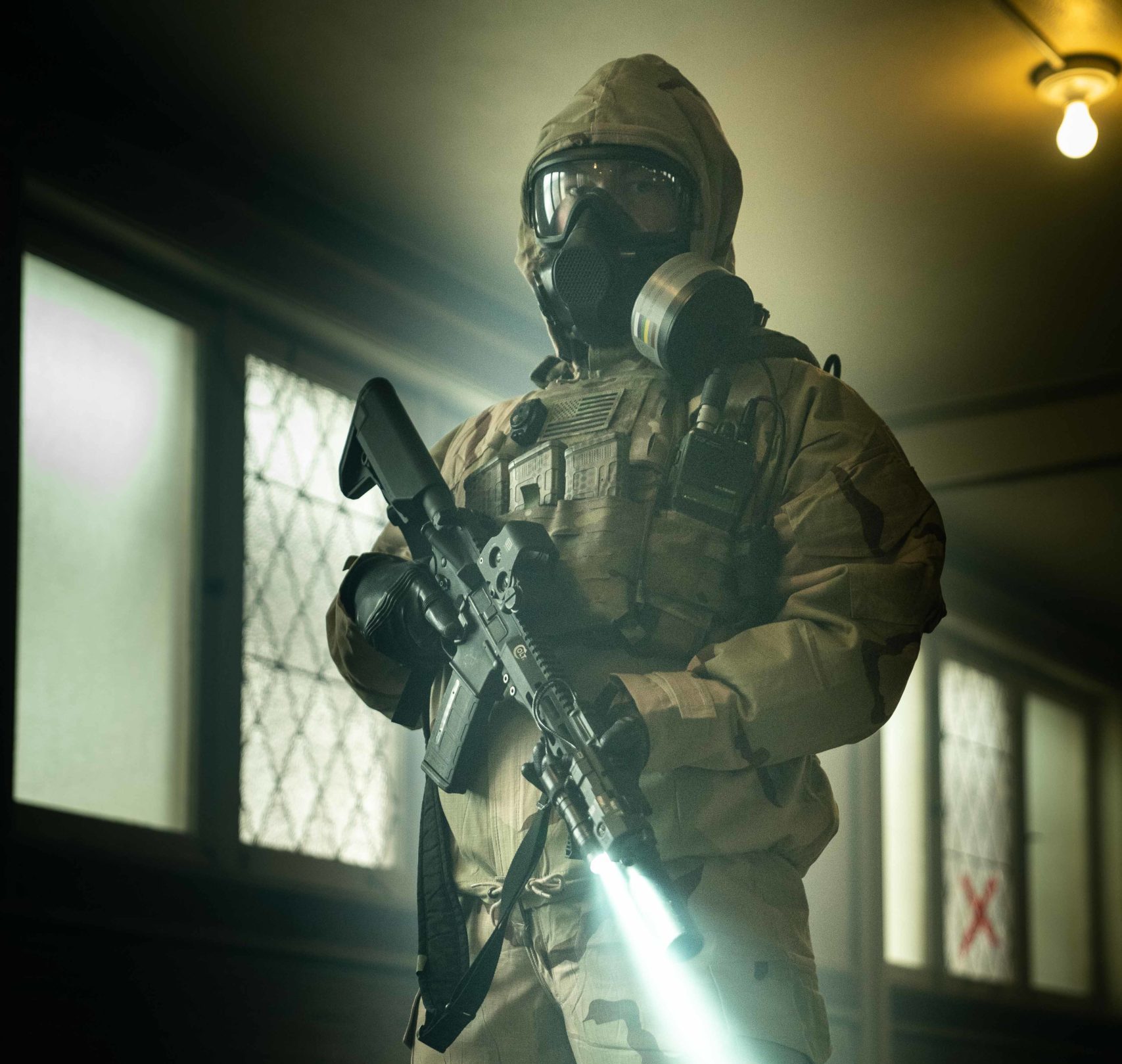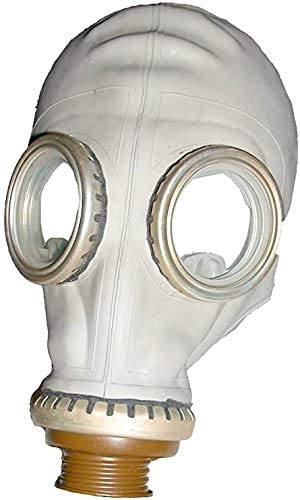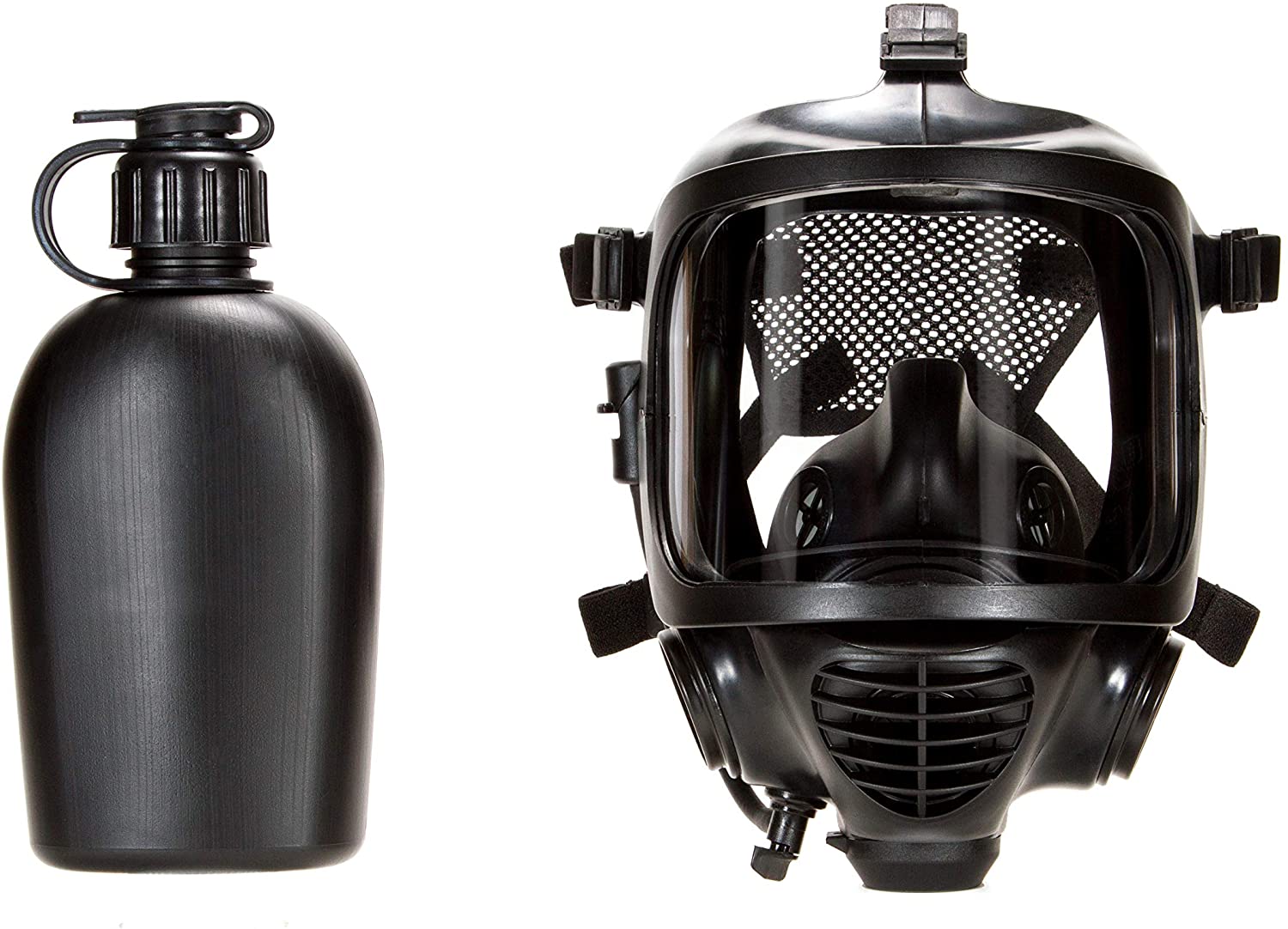Surplus gas masks have advantages and disadvantages. The advantage is that they’re cheaper, then there’s a drawback of potential health risks. Despite the potential danger in utilizing a surplus mask, people still purchase them for that “just in case” moment. If that’s you, how do you make sure your mask is safe for use, and which masks do you avoid? This blog will cover everything you need to know about surplus gas masks, particularly their filters, so you can make an informed decision on purchasing surplus or not.

Surplus Gas Masks and Filters
Disclaimer 1: Now, before some of you get too far into this blog and start to lose it: if you know everything in here, this blog isn’t for you. That’s like taking first-grade math as a 40-year-old man and then complaining that “everyone knows this.” Good, we’re glad you know SFSniperDude99, this blog isn’t for you.
Disclaimer 2: Surplus gas mask use is a bit controversial. There are tons of people out there who argue there’s nothing wrong with it; get yourself a new filter, change out your 60mm for a 40mm with a conversion piece, and move on. Then some argue that it’s basically the worst thing in the history of the world you could do. Okay, maybe I’m exaggerating on that last part, just a bit. But you’d think it from the rude comments people tend to write—since they don’t have to leave the comfort of their chair and face anyone to say it.
I digress to let you know; this blog is informational. What you do with that information is on you. We’re not making you wear it, nor are we making you take it off. Wear it to your best friend’s wedding for all we care. Again, this is for informational purposes only. So chill out a bit before you give yourself a hernia.

Are Surplus Gas Masks Safe?
The biggest problem with surplus gas masks is that they have aftermarket filters on them. For instance, most of you probably know about the famous Russian surplus mask, which has a 60mm thread; it can only fit that size filter. That wouldn’t be much of an issue, except that 60mm filters aren’t being manufactured anymore. That typically leaves people buying old filters, which unfortunately have a shelflife. This means, even if the filter wasn’t used, or even opened, that the components used to filter out contaminated air won’t work to their fullest potential. And often, those old filters have dangerous components in them, which I’ll get to later in this article.
Besides filters, the actual mask’s material is made to last, which is why the older surplus items are still around. However, even with a new mask, you have to check your equipment. Mice might get into your mask, depending on how it was stored, the material could be damaged too. So, check the actual material and components of the mask. If there’s any damage, it could prevent a proper seal, which means it won’t do a great job protecting you if things get serious.
If you decide to get a surplus gas mask, consider a 60mm to 40mm conversion piece, called an adapter, so that you can fit a newly manufactured filter on there. Also, make sure you clean the mask first. I know that should go without saying, but everyone comes from different backgrounds, so I’m covering that too.
Again, always check that your equipment isn’t damaged. A clean mask won’t do you any good if it doesn’t seal.
Gas Mask Filters
To continue on gas mask filters, I wanted to take a moment to point out that not all filters are created equally. Some protect you against viruses. Some protect you against biological or neurological agents, some smoke, and others, chemical agents you use to clean your bathroom.
When you’re searching for a mask, decide what you want to protect yourself from. Our blogs are geared toward Chemical, Biological, Nuclear, and Radiological (CBRN) protection. Some gas masks will protect you from all of these things; others will protect you from the NBC, meaning everything in CBRN but the radiological agents.
Once you decide what you want protection from, then tailor your search to that. Keep in mind, if you’re worried about fire, not all gas masks hold up to certain temperatures. And if your filter isn’t intended for smoke, the filter can get clogged, and you won’t be able to breathe.

What is Your Gas Mask Filter Rated For?
Know what your gas mask filter is rated for. If you get hit with mustard gas, but you’re wearing an N95, things aren’t going to turn out in your favor. There is a difference between full face masks and half masks. The filters in half-masks aren’t going to protect you from nuclear warfare or nerve agents, but it might save you from dust while cleaning out your grandma’s basement.
WWII Gas Mask Filters
Surplus gas masks with filters made in WWII are considered dangerous (most, not all). If you want a WWII mask, consider it for looks/display. or get the adapter mentioned earlier. The mask filters made in WWII were often built with asbestos in them as a filtering agent. While it worked, asbestos has been known to cause cancer and kill you many years later. Soldiers in WWII, who used these types of filters for their masks, have been reported to have significant health issues later on down the road, and in some cases, that resulted in death.
Just be careful which decade your masks were created in and who made them. Not all gas masks used asbestos to filter out chemicals and such, but many countries did use this filtering agent, especially during WWII. The Italians and Germans are both examples of countries using asbestos in their gas mask filter production during this period. I’m not going to list out every country, so when you buy, look to see where the filter came from and when it was manufactured.
Note: It is illegal to sell asbestos-filled filters. However, that doesn’t mean it doesn’t happen. Do your research before donning your mask and filter.
What Surplus Gas Mask Should be Avoided
It’s not so much the gas mask to avoid but the filters used with them. When it comes to avoiding the actual mask, that will depend on your preferences and what you plan to do when wearing the mask. For instance, some masks are easier to see in and have wider views, making it easier to shoot. Others fog up and make it difficult to see while others don’t. Some gas masks make it easier for others to hear you speaking, great for first responders. And while all gas masks can feel a bit claustrophobic, some, like the Russian surplus mask, are quite worse.
If you’re able to put a 60mm to 40mm adapter on your mask, you should be fine. Simply make sure you clean the mask before use and frequently check for any damage.
What Gas Mask Filters are Unsafe?
Again, it’s not so much the mask you need to worry about; it’s the filters. In general, WWII filters can be dangerous; not all but most countries used asbestos as a filtering agent, which was found to cause lung cancer many years later. Below are a couple of filters that have been on the controversial list, but you might want to avoid them.
GP-5 Gas Mask Filters
Russian GP-5 filters from the cold war were a bit of a controversy for a while. Some thought they didn’t have asbestos in them; others said they did, but it was such a small trace that it didn’t matter. However, it has been confirmed that these filters do, in fact, have asbestos in them. If you want to use the Russian mask, consider the adapter to attach a new 40mm NATO filter.
E-014 Gas Mask Filters
Another filter known to have asbestos in them is the E-014 filter. The Soviet Military style filters might have a little less asbestos than those in WWII, but still not as safe as the newer, non-asbestos filters.
How to Clean Your Gas Mask
No matter the gas mask you purchase, new or old, you need to clean it.
- If you don your gas mask, you should clean it after.
- If it’s a surplus gas mask, you should clean it before and after use.
- If it’s been sitting around for a while, you should probably clean it again.
There are a few ways to go about cleaning your mask. You can do a cleaning solution, dunk the mask in it and scrub it with a soft cloth until it is adequately cleaned. You can also use disinfectant wipes. If you buy new, they might be included. Somethings you want to keep in mind when cleaning your gas mask: it’s better for your mask if you use a natural detergent (if you’d like); also, when you wash the mask, make sure the water/cleaning solution isn’t over 120ºF. Basically, clean it like you’d clean your great grandmother’s fine china, not in the dishwasher, not with abrasive materials, not with any hard cleaning chemicals.

Conclusion
If the mask itself is in good condition, there’s usually nothing wrong with buying surplus. Typically, it’s user preference that should determine a surplus or new purchase. However, if you buy surplus, consider getting a 60mm to 40mm adapter to attach the newer, safer 40mm NATO filters currently being manufactured. Below are a few takeaways.
- Make sure your gas mask filter doesn’t contain asbestos.
- Many countries in WWII used asbestos as a filtering agent.
- Filters have a shelflife and should be replaced when they expire.
- Clean your gas mask, new or surplus.
- Regularly check your mask for damage.

Did we miss anything? Do you have further recommendations or advice? Please, comment below. We love hearing from our readers!
Are you looking for more content? Check out some of our other stuff!






Leave a Reply
Your email address will not be published. Required fields are marked *